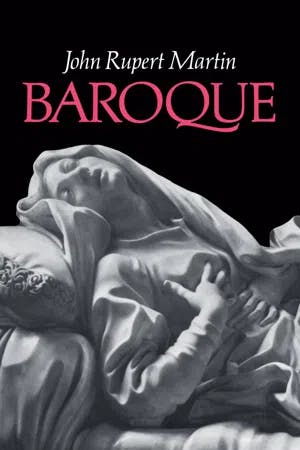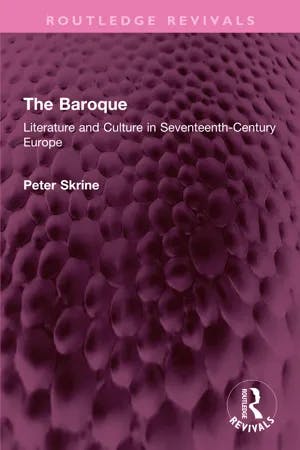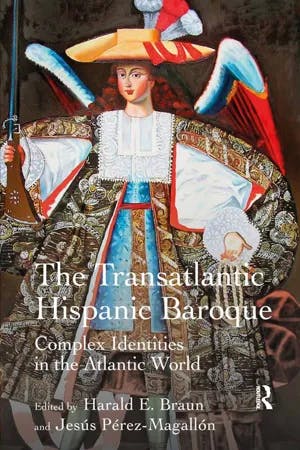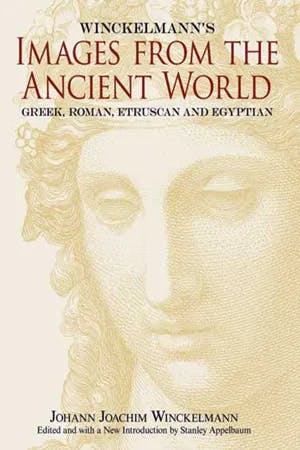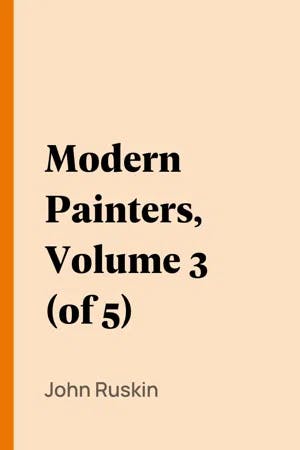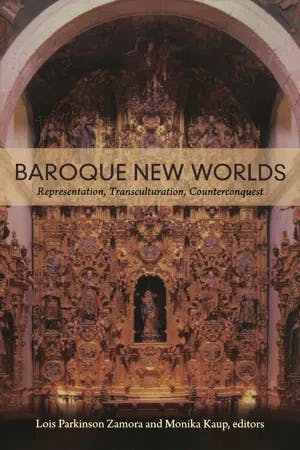What is Baroque Art?
PhD, Media Arts (Royal Holloway, University of London)
Date Published: 03.01.2024,
Last Updated: 04.01.2024
Share this article
Defining baroque
Baroque is a highly recognizable style in fine and decorative arts and is often heralded as one of the greatest art movements in European history. Present in the painting, music, sculpture, architecture, and design of the 17th and early 18th century, baroque is most commonly discernible through its intricate, often gold ornamentation and dramatic subject matter. Johann Sebastian Bach (1685–1750) in music, Gian Lorenzo Bernini (1598–1680) in sculpture, and Michelangelo Merisi da Caravaggio (1517–1610) in painting, baroque artists intended to interact with the churchgoing public. Decorating churches, theaters, and grand homes, baroque was a display of devotion and human feeling.
“Baroque” is the English-language iteration of an unsure and motley etymological history. It is thought to have derived from the Italian “barocco,” a term used by philosophers of the Middle Ages to describe a problem posed in the unfolding of a formal logical argument. It is also thought to have come from the Portuguese “barroco” – or the French word “barroque”– meaning “irregularly shaped,” originally referring to aspherical pearls. Whatever its source, baroque became loaded with significance and connotation, starting in France as a criticism of music with an incongruent melody and unstable meter, eventually becoming a description of an aesthetic found around the globe that embodies the trends of the 17th century.
As easy as it is to define the baroque aesthetic as ornate, extravagant, and over-the-top, art of the baroque period was more diverse than this common definition might suggest. Of this, John Rupert Martin asserts,
Like most historical art movements, baroque is perhaps better understood as the expression of a set of thoughts and values rather than a collection of aesthetic tendencies. With that in mind, the following study guide will outline some of the significant cultural changes that brought about the global style of baroque and explore its distinct aesthetic.
The rise of baroque
Before the baroque emerged in the 17th century, the Renaissance (14th c.–17th c.) was dominated by mannerism and the first major revival of classical antiquity. This classicism was balanced, restrained, and static, celebrating the achievements and virtues of humankind. With a surge in science, rationality and reason (and a growing interest in literature and higher literacy rates) came the destabilization of the Roman Catholic Church. These shifts led to the Protestant Reformation which began in 1517 and marked a break in the unity of the church. This new Lutheran strand brought about scrutiny of previously established icons of idolatry, calling for the removal of certain images from churches.
The Catholic Church, on the other hand, believed in the power of images – in the visual representation of idols – as a means of establishing and heightening belief and worship. To regain power and popularity, the Catholic Church endorsed baroque art, incorporating the baroque aesthetic into the iconography of the church.
Baroque rejected the academic style – the stark and precise aesthetic of the classical Renaissance – appealing instead to the average churchgoer. One significant way this effect was achieved was through the appeal to emotion. Baroque art was arresting, dramatic, an indiscriminate feast for the senses.
With the weight of the Counter-Reformation behind it, in the 1600s baroque began to flourish. Starting as a feature of Roman Catholic Churches, the drama and embellishment of baroque began expressing itself in Italian architecture, music, and painting. Although Rome was the epicenter of baroque art, it quickly spread. From Italy to France and across the rest of Europe –– where it became a recognizable monarchic symbol – to China, Indonesia, Japan, and Latin America, the baroque style traveled through colonial and missionary efforts, becoming a global aesthetic style. In some ways, baroque assimilated into new cultures and aesthetics, responding to different tastes and artistic materials. These considerations have offered an expansion of the definition and characteristics of baroque. As Peter Skrine outlines in The Baroque,
This illustrates the profound impact and global reach that baroque had during the 17th century.
Baroque and the performing arts
Although baroque is commonly associated with architecture and fine arts, the term first appeared with reference to music. The 16th to the 18th centuries marked one of the most important periods for Western music, with baroque making up a significant portion of what we now know of as classical music. Where music of the medieval and Renaissance periods was for the most part simplistic, made up of singular, clean lines, baroque music established harmony and the major and minor scales as the central, tonal structure. This made for a richer, fuller sound. Following the major and minor scales, musical phrases became more structured and repeated to form a melodic motif. These motifs were heavily embellished; they were intertwined to form rounds with the introduction of techniques like trills. Again, this resulted in a big and ornamented sound. Composers like Johann Sebastian Bach, George Frederic Handel (1685–1759), and Antonio Vivaldi (1678–1741) provide examples of the way that music changed in the baroque period.
Theater found a natural home in the baroque movement, full of emotion, drama, and expression. The theater allowed for innovation through the combination of new technologies and storytelling devices, resulting in new artforms like the opera and ballet.. These types of dramatic arts combined music and theater and joined the already-established performing arts, reflecting daily life with a high degree of glamor and spectacle, and capturing the attention and imagination of spectators from a range of social classes and educational backgrounds. Ropes and pulley systems were employed so that characters could descend and ascend from a divine realm that felt closer than ever. The presence of visual art was also added to the spectacle of theater, with the addition of an elaborately framed stage hosted in great halls in highly ornate buildings.
In an attempt to approximate life, baroque theater appealed to the complex ideas and emotions of the time. In As You Like It (1623) William Shakespeare epitomized the baroque era when he wrote “all the world’s a stage” (1623, [2017]). This phrase encompasses the turn from Renaissance humanism to the higher power of God; that there is a divine master to which all our earthly activities hope to appeal. The way in which theater combined art forms to mirror life in a grand and exaggerated manner illustrates one of the central characteristics of baroque: the embellishment of life with religious power.
Caravaggio and the baroque style in painting
By now we know that the purpose of baroque was to captivate and command the attention and admiration of the public to restore faith, shaken by the developments of the Renaissance. To this effect, the baroque aesthetic is arresting; it interacts with its onlookers, almost pursuing them. This was all in an effort to traverse the divide between art and life, divinity and the earthly realm; to make divinity and art more immediate. But what painting techniques made this effect possible in the visual arts?
The classicism that became popular in the Renaissance was purely to be admired; it sat motionless on a pedestal. Baroque took this naturalism and imbued it with a heightened sense of emotion, full of terror and ecstasy. One of the most important artists of the baroque movement was Italian painter, Michelangelo Merisi da Caravaggio (1517–1610). One aspect that makes Caravaggio’s work so distinctive is his use of light. His paintings are rich in color and contrast, creating a dramatic effect that became typical of the baroque style.
The conception of light as a phenomenon that is at once physical and supernatural was first formulated in powerful terms by Caravaggio and was soon adopted everywhere, even by painters who had little taste for that artist’s personal style. (Martin, 2018)
This contrast gave baroque painting a sense of drama and theater, sure to grab attention and evoke emotion. In The Taking of the Christ (1602), this dramatic use of light is exemplified (see Figure 1).
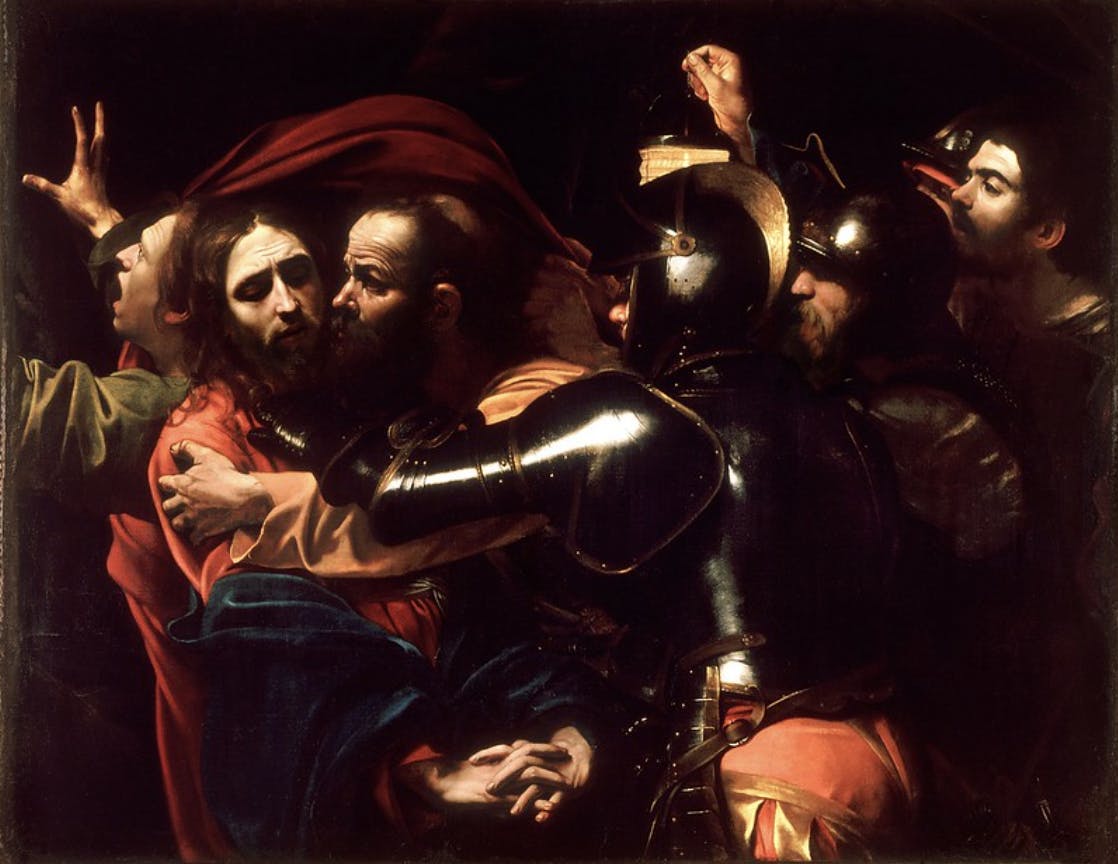
Fig. 1, Michelangelo Merisi da Caravaggio (1602) The Taking of the Christ (Photographed by Jahsparkey, 2017, Flickr)
In this painting, the figures of John, Jesus, and Judas – among others – are set against a pitch-black background. There is an attention to realism in the details of faces and hands, but there is also an exaggerated depiction of light. The armor of the soldiers gleams as though there is a hard light source coming from beyond the upper left side of the painting. The techniques at work in this painting are highly realistic, but it is simultaneously clearly loaded with religious imagery. Martin confirms that “it is typical of the Baroque outlook that divine illumination is also treated naturalistically” (2018).
This use of light, along with the theatrical movement of his paintings, gives Caravaggio’s work a sense of extreme tension, of anticipation. In The Entombment of Christ (1603), another of Caravaggio’s works still housed in the Vatican, we see grieving figures struggle to hold the limp body of Christ (see Figure 2).
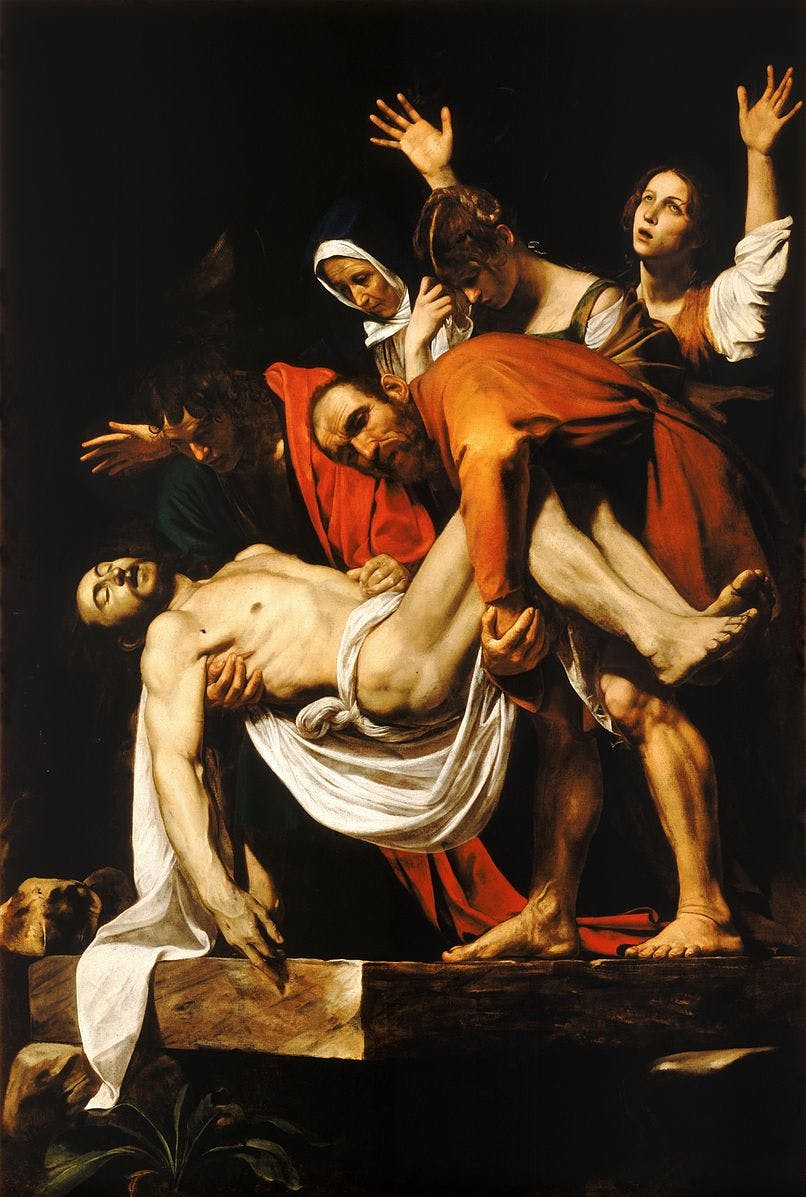
Fig. 2, Michelangelo Merisi da Caravaggio (1603) The Entombment of Christ (Uploaded on Wikimedia Commons)
The painting is full of realism and tension and a profound sense of grief. The weight of the body is so visceral, as if the work is in motion as if at any moment the grieving men will collapse and the body pulled down into the tomb. Again, this exemplifies, as Martin points out, the way baroque painters,
were able, through subtle contrasts of light and dark, to suggest a variety of other symbolic meanings, including, on the one hand, enlightenment, reason and truth, and on the other, evil, danger, blindness and death. (2018)
Here, we see another example of the way that the naturalistic painting techniques of baroque, in conjunction with the use of contrast, create highly affecting art. Caravaggio’s work is emblematic of the dramatic baroque style that was heavily loaded with moral messages, emotion and turmoil, and dynamic beauty.
Other notable baroque painters included Rembrandt (1606–1669), Peter Paul Rubens (1577–1640), Nicolas Poussin (1594–1665), Johannes Vermeer (1632–1675) and Diego Valázquez (1599–1660), all of whom exhibited the same dramatized naturalism, exaggerated use of contrast, and religious subject matter.
Criticism of the baroque
Despite its rise to prominence, baroque also received some criticism during, and naturally after, its period of popularity. Seen purely as a tool of the Counter-Reformation, baroque might seem to be mere propaganda. As Harald E. Braun and Jesús Pérez-Magallón point out, some saw
The art movements that followed baroque – like rococo and neoclassicism – certainly saw some truth in this summary. Rococo, which rose to aesthetic prominence in the 18th century and is sometimes referred to as the final iteration of baroque, exhibited a rejection of the seriousness of baroque; the emphasis on pain, punishment and faith was replaced with a playful and light-hearted whimsey. Rococo was guided by the premise that art should be an expression of liberation, not a tool for religious control.
Potentially the biggest advisory of baroque art was the art movements embedded in the classicist traditions of antiquity. The term “baroque” was first used as a derogatory description of artwork that deviated from the harmony and simplicity of classicism. Baroque art was seen as irregular, exaggerated, and excessive in comparison. This tension persisted and around 1750, neoclassicism emerged in Europe as a result of major archeological discoveries of ancient Greco-Roman cites. This initiated a cultural shift away from the heightened emotion and grandeur of baroque towards the idealized and balanced naturalism of classicism. As Stanley Appelbaum asserts,
Rather than baroque’s blatant manipulation of its spectators – immersing them in images full of terror and grief – neoclassicism represented the return of objectivity and restraint. Neoclassicist art was poised and static, making the flurry of baroque and rococo seem, to some, crude and unrefined.
With this resurgence of classicism, came a wealth of criticism of baroque. In some studies of art, baroque became synonymous with poor taste. Among the first art historians and avid classicists, Johann Joachim Winckelmann (1717–1768), called the great baroque sculptor, Bernini, “that destroyer of art”; a person “whom grace had never visited even in dreams” (Reflections on the painting and sculpture of the Greeks, 1755, [2020]). Winckelmann argued,
[Bernini] was worshipped as the genius of art, and universally imitated; for, in our days, statues being erected to piety only, none to wisdom, a statue à la Bernini is likelier to make the kitchen prosper than a Laocoon. (1755, [2020])
And he was not alone in these criticisms of baroque art. English art critic John Ruskin (1819–1900) famously disparaged the baroque. In ranking the different art styles, Ruskin lists the various iterations of classicism during Renaissance – Angelico, Paul Veronese, Albert Durer – finally asserting,
Ruskin found baroque art to exhibit a moral corruption, taking particular issue with the use of color in baroque painting. He accused Caravaggio of “vulgarity” and “impiety,” charging him of prioritizing sensory experience over representation of nature (1843, [2012]). Ruskin writes,
The corruption of the schools of high art, so far as this particular quality is concerned, consists in the sacrifice of truth to beauty. (1843, [2012])
Baroque’s commitment to emotion and its appeal to the senses fell out of fashion and under scrutiny in the wake of neoclassicism, and by the 19th century, it seems to have fallen, in some academic circles, completely out of fashion.
In defense of baroque
There were those, however, who defended baroque art. Swiss art historian Heinrich Wölfflin (1864–1945) was a key figure in the rehabilitation of baroque’s reputation, corroding the boundaries between baroque and classicism in a Hegelian synthesis. In his highly influential publication, Renaissance and Baroque, Wölffin describes this shift in dialectical terms, writing,
After the activity of Michelangelo and Raphael in the Vatican, painting, sculpture, and architecture increased steadily in scale; until beauty was conceived of entirely in terms of the colossal. Gracefulness and diversity gave way to a new simplicity, aiming only at large masses; the whole is permeated by a powerful and unifying force and nothing suggests a composition made up of separate parts. (1888, [1961])
Philosopher Friedrich Nietzsche (1844–1900) also addressed the tension between baroque and classicism, defending the value of the former. In an essay titled “On the Baroque,” he wrote,
Furthermore, in the wake of Romanticism, new inspiration was sourced from baroque. Baroque offered romanticism a way of rejecting the oppressive aesthetic tastes of classicism through dynamic emotional expression.
Despite the range of critical engagement associated with the baroque, it cannot be denied as one of the most crucial developments in European art. Its highly recognizable glitzy and gilded aesthetic as well as its grandeur and busy extravagance and grandeur continues to imprint on its onlookers, exactly as it was intended in the seventeenth century.
Further reading on Perlego
Ottoman Baroque (2019) by U Rüstem.
The Baroque in Architectural Culture, 1880-1980 (2016) by Andrew Leach, John Macarthur.
From Renaissance to Baroque: Change in Instruments and Instrumental Music in the Seventeenth Century (2017) by Jonathan Wainwright.
Renaissance and Baroque Art: Selected Essays (2020) by Leo Steinberg, Sheila Schwartz.
Neo-Baroque: A Sign of the Times(2017) by Omar Calabrese, Charles Lambert.
Bibliography
Appelbaum, S. (2013) “Introduction,” in Winckelmann, J. J, Winckelmann’s Images from the Ancient World. Dover Publications. Available at: https://www.perlego.com/book/110613/winckelmanns-images-from-the-ancient-world-greek-roman-etruscan-and-egyptian-pdf
Braun, H. and Pérez-Magallón, J. (2016) The Transatlantic Hispanic Baroque. Taylor and Francis. Available at: https://www.perlego.com/book/1631988/the-transatlantic-hispanic-baroque-complex-identities-in-the-atlantic-world-pdf
Martin, J. R. (2018) Baroque. Taylor and Francis. Available at: https://www.perlego.com/book/1597272/baroque-pdf
Nietzsche, F. (2010) “On the Baroque,” in Zamora, L. P. and Kaup, M. (eds.) Baroque New Worlds. Duke University Press. Available at: https://www.perlego.com/book/1457885/baroque-new-worlds-representation-transculturation-counterconquest-pdf
Ruskin, J. (2012) Modern Painters, Volume 3 (of 5). Perlego. Available at: https://www.perlego.com/book/1728429/modern-painters-volume-3-of-5-pdf
Shakespeare, W. (2017) As You Like It by William Shakespeare (Illustrated). Delphi Classics (Parts Edition). Available at: https://www.perlego.com/book/1654168/as-you-like-it-by-william-shakespeare-illustrated-pdf
Skrine, P. N. (2023) The Baroque: Literature and Culture in Seventeenth-Century Europe. Taylor and Francis. Available at: https://www.perlego.com/book/3907278/the-baroque-literature-and-culture-in-seventeenthcentury-europe-pdf
Winckelmann, J. J. (2020) Reflections on the painting and sculpture of the Greeks. Perlego. Available at: https://www.perlego.com/book/1850350/reflections-on-the-painting-and-sculpture-of-the-greeks-pdf
Wölffin, H. (1961) Renaissance and Baroque. Benno Schwabe & Co.
Artwork
Dali, S. (1958) Madonna. [Oil on canvas]. Tate Gallery, London.
Caravaggio, M. M. (1602) The Taking of the Christ [Oil on canvas]. National Gallery of Ireland, Dublin. (Photographed by Jahsparkey, 2017, Flickr)
Caravaggio, M. M. (1603) The Entombment of Christ [Oil on canvas]. Vatican Pinacoteca, Vatican City. (Uploaded on Wikimedia Commons)
PhD, Media Arts (Royal Holloway, University of London)
Aoiffe Walsh has a PhD in Media Arts from Royal Holloway, University of London. With a background in film studies and philosophy, her current research explores British literary modernism, with a particular focus on surrealism between the wars. She has lectured and published pieces on documentary and film theory, film history, genre studies and the avant-garde.

